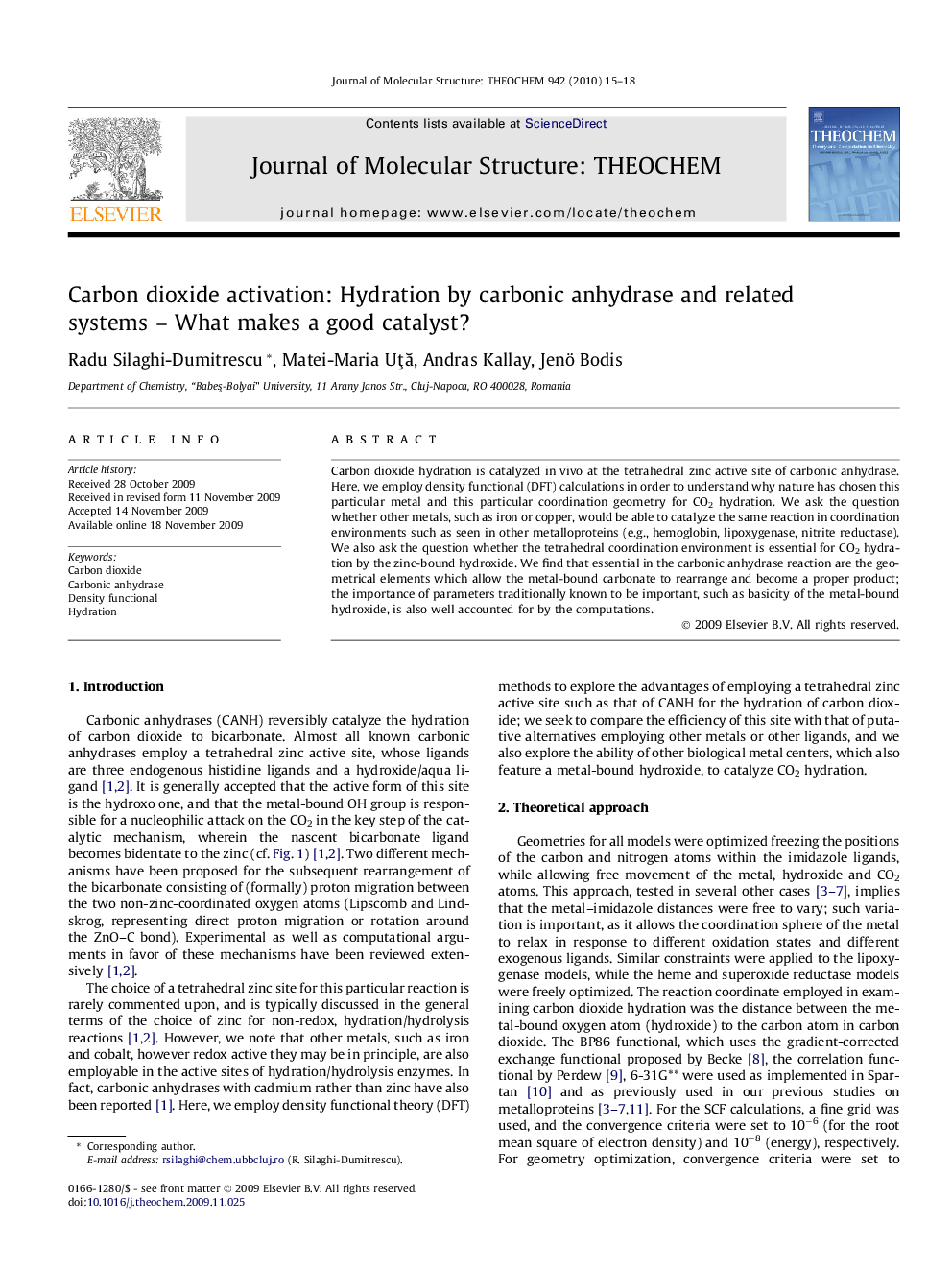| Article ID | Journal | Published Year | Pages | File Type |
|---|---|---|---|---|
| 5416623 | Journal of Molecular Structure: THEOCHEM | 2010 | 4 Pages |
Abstract
Carbon dioxide hydration is catalyzed in vivo at the tetrahedral zinc active site of carbonic anhydrase. Here, we employ density functional (DFT) calculations in order to understand why nature has chosen this particular metal and this particular coordination geometry for CO2 hydration. We ask the question whether other metals, such as iron or copper, would be able to catalyze the same reaction in coordination environments such as seen in other metalloproteins (e.g., hemoglobin, lipoxygenase, nitrite reductase). We also ask the question whether the tetrahedral coordination environment is essential for CO2 hydration by the zinc-bound hydroxide. We find that essential in the carbonic anhydrase reaction are the geometrical elements which allow the metal-bound carbonate to rearrange and become a proper product; the importance of parameters traditionally known to be important, such as basicity of the metal-bound hydroxide, is also well accounted for by the computations.
Related Topics
Physical Sciences and Engineering
Chemistry
Physical and Theoretical Chemistry
Authors
Radu Silaghi-Dumitrescu, Matei-Maria UÅ£Ä, Andras Kallay, Jenö Bodis,
